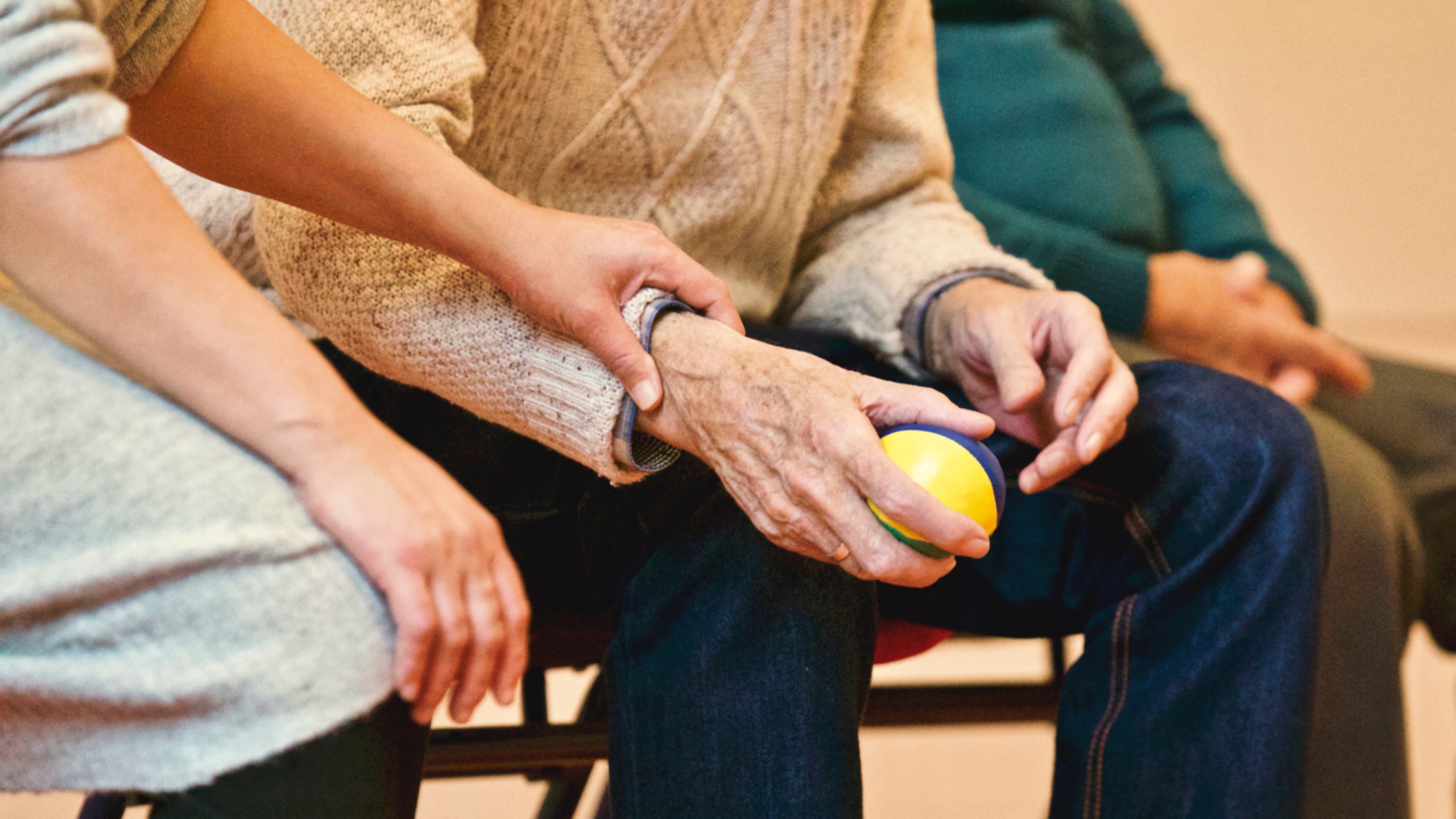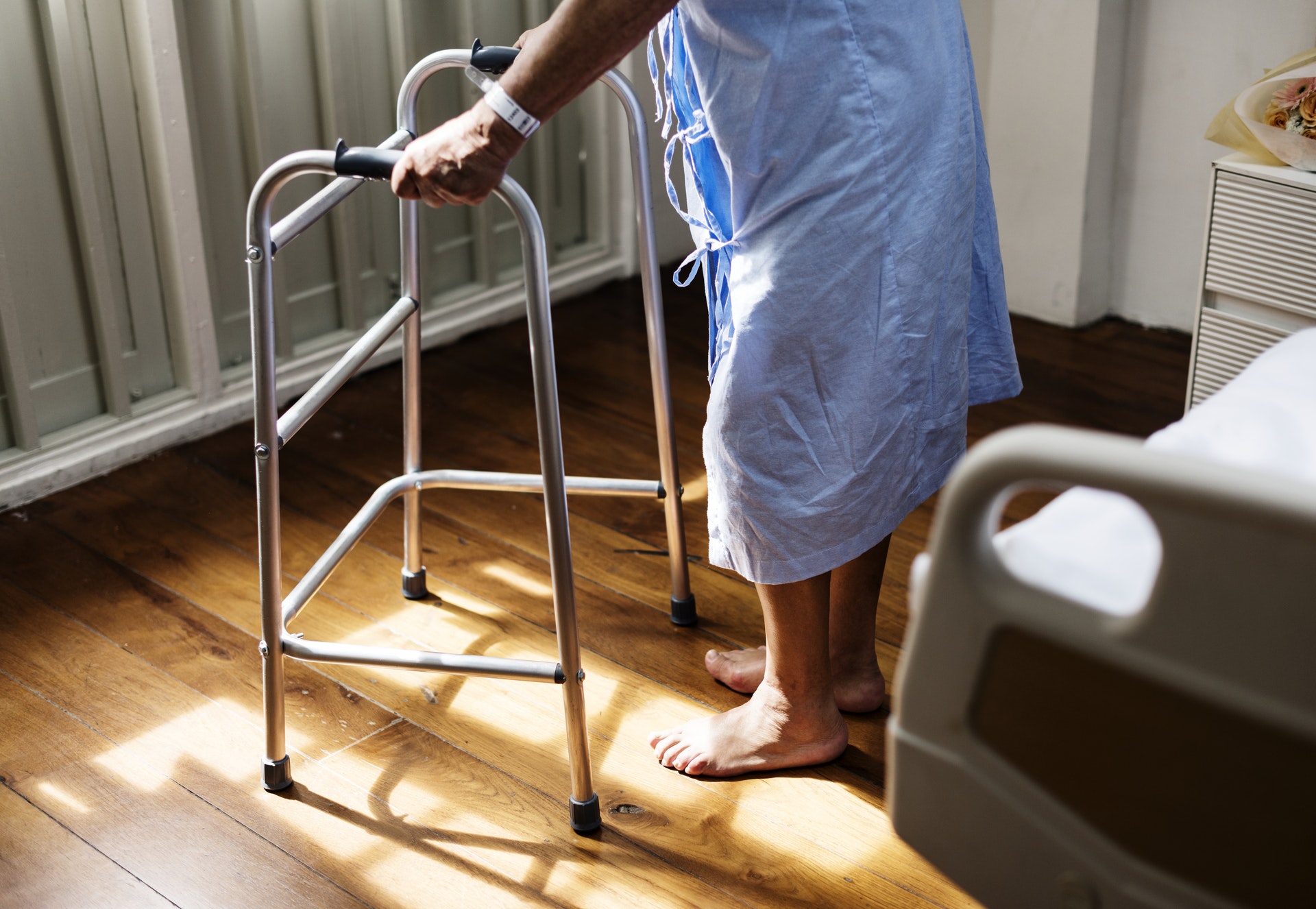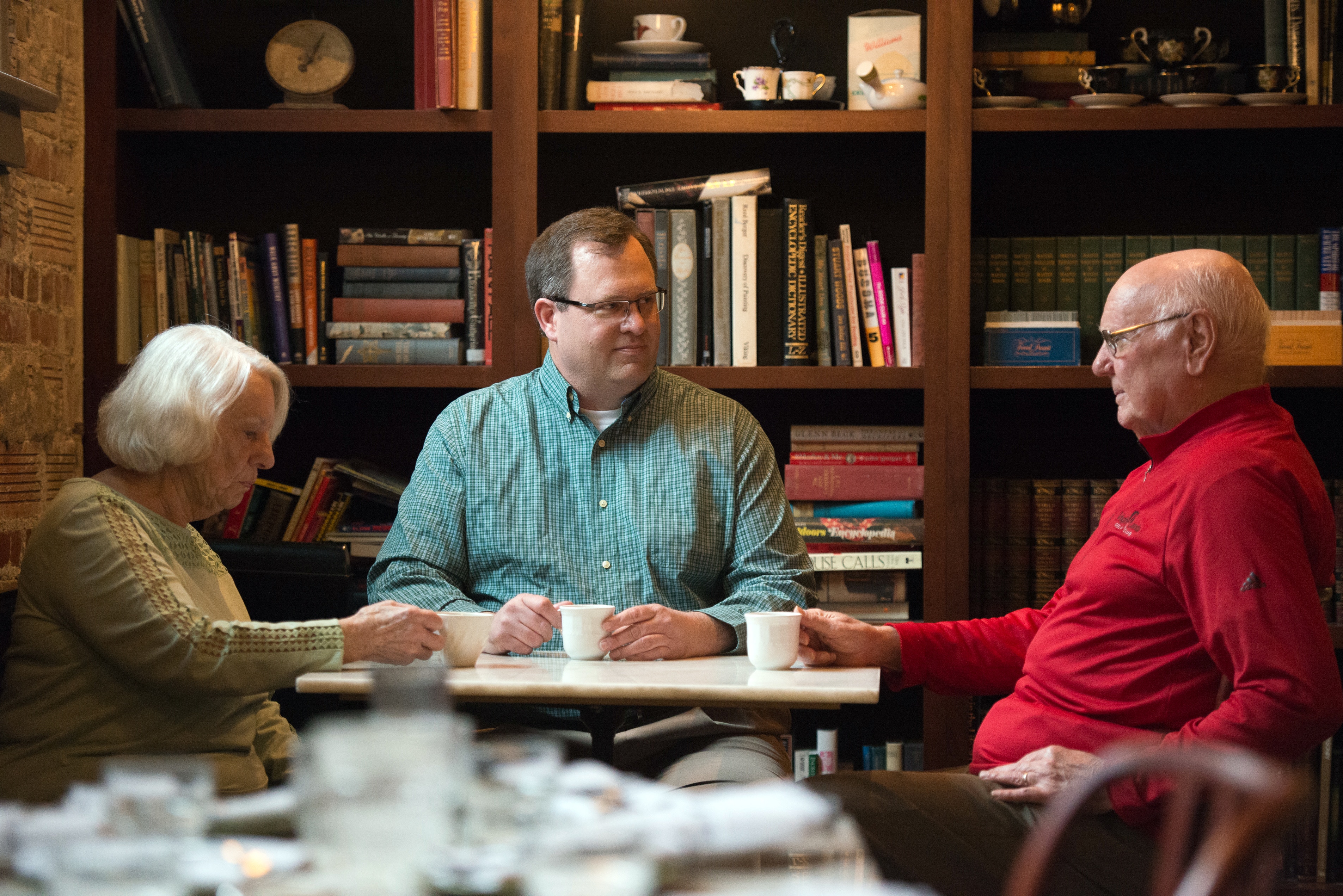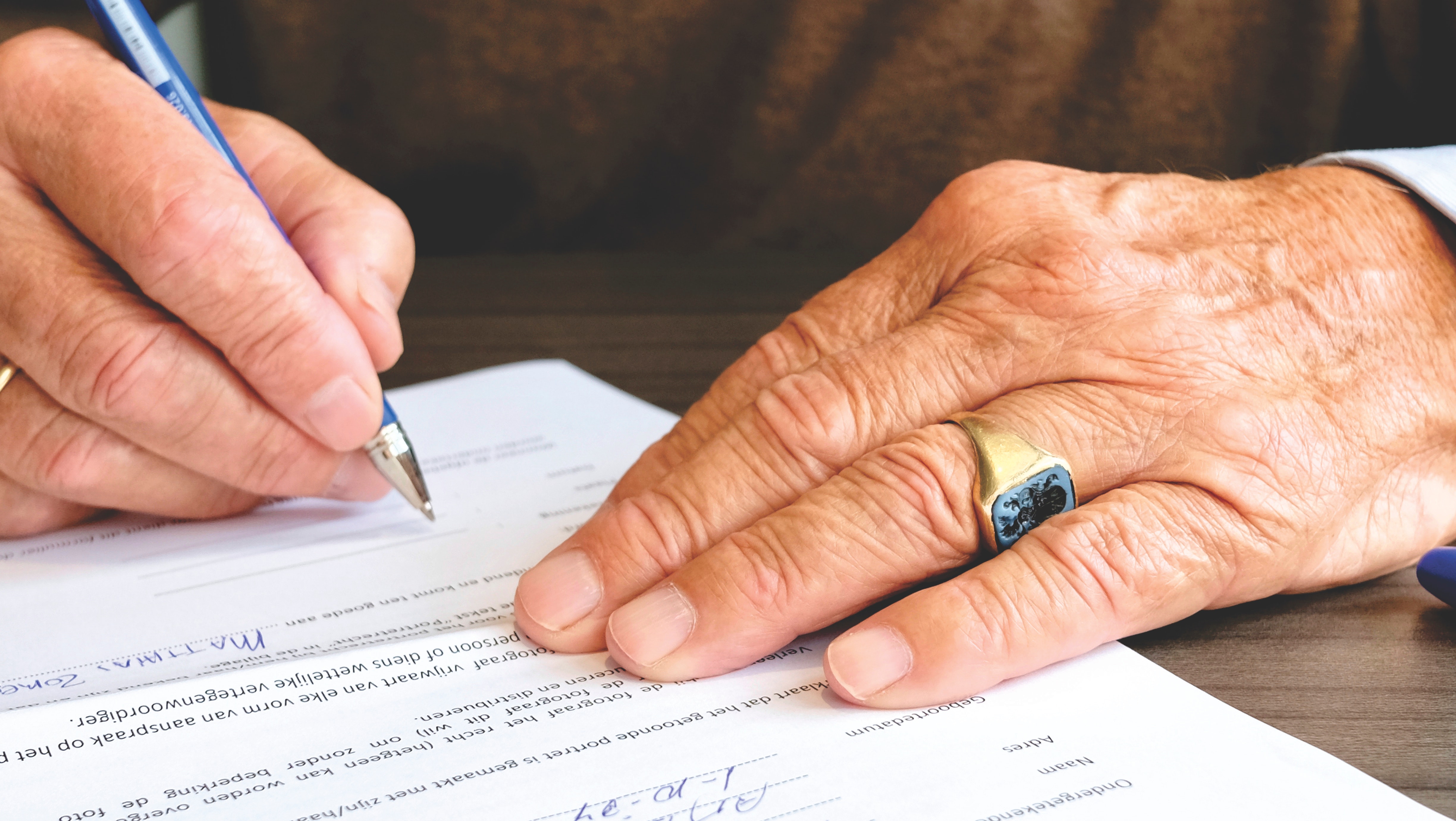
A tumble. All it takes is a second – but that moment can alter the course of a senior’s life. In fact, according to the National Council on Aging, someone’s parent or grandparent enters the emergency room every 11 seconds for a fall-related injury.
The older people in our lives are our family’s celebrities. Whether they’re active or bedridden, their life experiences and wisdom make them seem invincible. Yet an everyday injury from an accidental fall could result in unintentional death for the aging superheroes we hold so dear. The CDC estimates nearly 60 deaths per 100,000 senior citizens aged 65 and over result from an unexpected fall.
Even real-life celebrities aren’t safe, despite their expert medical teams and round-the-clock care. In 2016, musical legend Leonard Cohen passed away in the middle of the night from a fatal injury caused by a slip and fall.
While these accidents don’t always result in death, they do have a tremendous impact on one’s health and finances. 17 million fall-related incidents result in a disability that negatively impacts the older person’s remaining years, notes the World Health Organization (WHO).
Unexpected medical bills directly (immediate, post-injury treatment) and indirectly (disability and/or end-of-life care) related to a fall can cause financial ruin for seniors or their families. By 2020, the collective cost for injuries related to seniors, aged 65 and over, who fall could total $67.7 billion annually.
In this guide, we’ll cover everything from why seniors fall and how to prevent injuries to identifying the need for care as well as financial and legal considerations for fall-related injuries.
Good health goes a long way in fall prevention. Medical science has increased our life expectancies, but it hasn’t cured the afflictions of old age. Age-related diseases can and do create physical instability.
The first step in fall prevention is identifying health-related risks. There are a number of factors related to fall risks, and they may vary based on the individual. The following assessment should not replace the advice of a medical professional. Rather, consider it a checklist that you and your loved one can review with a qualified doctor.
To stay on top of the fall risks associated with chronic health issues, seniors need timely care by a trusted doctor. Ask your loved one if you can sit in on an upcoming appointment to learn more about the medical care that could identify fall risks. Regular health exams for your senior family member should include the following:
Staying active goes a long way in fall prevention. So too does rest and relaxation. While certain activities may be beneficial, others could adversely impact an older person and increase their fall risks.
As always, age, diseases, and previous fall history should be considered on an individual basis. Before you encourage your loved one to begin a program or routine, ask them to run it by their doctor. The following may support quality of life and fall prevention if practiced under medical supervision:
Some prescriptions, such as step aerobics and chiropractic care, can have a real and positive impact on fall-risk reduction. Look for plans that target balance and mobility as well as build strength. And remember, a regimen is best when it’s practiced regularly. If your loved one stops an activity, he or she should consult with a doctor again before resuming. This will reduce the risk of overexertion or ‘doing too much too soon.’
For additional tips and advice related to senior health, visit:

It’s the way of the modern world: We live longer, but we’re also farther away from our family. Trends in family life vary across the U.S., but as AARP reports, for some seniors, the nearest family member might be more than five hours away. This stat doesn’t account for the complexities of family dynamics. Is the relative even a traditional caregiver, such as a child, or is it a brother or sister who is also aging and in no position to help when needed?
We love our elders, but it’s impossible to be in two places at once. For many, it’s a struggle to divide time between work and children let alone an aging parent. It is possible for some seniors to live alone safely. However, it’s important to note that those aged 85 and older are at a higher risk for falling without the ability to return upright or “lying on the floor for a long time after falling,” The Chicago Tribune reports.
Regardless of the individual circumstances – whether we’re near or far, we visit often or just enough – safeguarding our aging family members via tools that protect them from a fall or support them in the event of a fall is key. Many supportive devices are covered by Medicare or other insurance. Here is a list of safety equipment plus information about how seniors can obtain them.
Before installing a device or choosing a service, talk to your loved one about how it could impact their privacy, daily routine, or overall lifestyle. Discuss the pros and cons of each item based on the individual’s needs.
Insurance Type | Equipment Qualification | Obtaining Equipment Coverage | Equipment Ownership |
Eligible medical equipment must be considered DME or durable medical equipment per your insurance plan. Medicare should allow for at least some coverage of most equipment under this definition. | To obtain DME coverage for an item, you’ll still need to ensure your doctor and equipment supplier are Medicare participants. A copayment may be assessed as well. | In some cases, you will not retain ownership of the equipment unless you’ve made about one year of copayments toward the device. | |
Private Insurance | Coverage will vary by the insurance carrier and even plan, but generally, equipment must be DME to qualify for coverage. | You’ll typically need a prescription from a medical professional. You’ll most likely need to shop with an in-network vendor to obtain coverage for a device. Most plans require copayments or payments, even if the device is covered. | You may not fully own the equipment despite making any number of copayments. The provider may reserve the right to recover the equipment if your coverage ends, as is the case with this Cigna plan. |
DME via the Department of Veteran Affairs Civilian Health and Medical Program is subject to the similar qualifying factors as those above. | The plan features similar guidelines for and restrictions to coverage of DME. Doctor recommendation is needed. | CHAMPVA does not explicitly define ownership of a device, so it’s important to speak with a representative if you think your loved one may change insurance plans before making 13 months of copayments on the equipment. |
“Medical necessity” is an important term when it comes to getting durable medical equipment through a health plan. A physician’s prescription is a key factor for determining what is medically necessary for a patient; however, the definition of medical necessity as it relates to coverage varies slightly based on your insurance provider, plan, and the type of equipment. A prescription for a device does not equal coverage.
Ownership and replacement rules vary. Some providers:
Therapeutic recovery devices, such as hot tubs, aren’t usually covered. Additionally, wheelchairs and scooters are typically only covered after a patient has met the criteria for immobility.
While it’s important to shop around for competitive pricing, the limitations of coverage are such that you must choose a provider within the provider’s network. Some insurance companies do offer pricing calculators, which allow you to determine the general cost of coverage before you shop.
Medicare has a unique condition called “competitive bidding,” which means you may only purchase from specific contractors if you live in a particular region.
If your device isn’t covered by insurance or is too expensive even with coverage, you might be eligible for third-party financial assistance.
For additional tips and advice related to fall safety and equipment, visit:

Fall prevention and personal security start in the home. It’s the one environment that we have some control over. Just one non-fatal fall can lead to a greater need for dependence in an aging adult – which might mean a senior has to leave his or her home altogether.
According to the National Safety Council, falls typically happen in our most familiar place: Home. In fact, the bathroom is the highest-risk area for seniors.
Creating a safe environment is the best way to prevent seniors from falling, which enables them to stay in their homes unassisted for longer.
As we age, our homes age too. What was convenient or trendy for your loved one in their 30s may be a source of concern in their 70s. Along with regular, preventative maintenance, consider the following home improvements for seniors:
The Americans With Disabilities Act (ADA) offers many housing protections for seniors who qualify as disabled. For instance, it is unlawful for an agency to discriminate against a homeowner who wishes to obtain a permit for a disability-related modification. It’s also unlawful for a realtor or agent of the state to prevent or discourage someone from buying a home or land based on their disability.
Fair Housing Act (FHA) Accessibility Guidelines are also in place that require newly built homes to be accessible for people with disabilities. This matters if you are working with a contractor to build a new home for your loved one.
You have the legal right to reasonable accessibility accommodations. The FHA provides that landlords must modify or allow modifications of a rental home when it is directly related to the specific needs of a person who is disabled. While these modifications are not intended to prevent falls, they may indirectly and positively impact a person’s stability – especially when they provide easy access to everyday items.
Talk to your loved one’s landlord before making any modifications, even if you believe your loved one is entitled to them by law.
In situations where the landlord fails to comply, avoid confrontations that could put your loved one in a vulnerable position or cause undue stress. If you’re unable to resolve the matter privately, consider contacting your local housing authority or obtaining legal counsel.
For additional tips and advice related to home accessibility, visit:

According to a Pew Research finding, more than one-third of adult children reported that their parents aged 75 and older required help caring for themselves. What’s not known is how many seniors don’t ask for help because they’re embarrassed or in denial about the effects of aging.
As a family member or caregiver, adopt a proactive approach to the personal support of your loved one. Don’t wait for your parent or grandparent to ask for help; that moment may come only after he or she has already experienced a life-threatening injury. There are many legal considerations where seniors are concerned that might affect your ability to help.
Home Health Care Type | Provider Qualifications | Special Considerations |
Nurse | This person is registered and certified to provide medical care, including medication administration or more complicated procedures, such as catheterization. | Search for in-network home nurse options on your insurance provider's website to ensure this caregiver is at least partially covered. |
Health Aide | This is a specialized occupation that requires specific training. Health aides can perform tasks similar to that of nurses. | A home health aide does not replace the need for a nurse; however, a health aide may help cut costs by acting as a supplemental care when round-the-clock nursing isn't financially possible. |
Companion | This person could be around the same age as your loved one and may require similar or less care. He or she may provide emotional support as well as health accountability. | In some cases, this person may even be considered a roommate. Be sure to consider any liabilities associated with this aging person's care, including their family and caregiver support. |
Volunteer | This person should be registered with a volunteer program that scrutinizes its applicants. Since this individual will spend time in your loved one's home, you should consider interviewing him or her to identify their motivations. |
|
Driver | This person should have a proven track record of satisfied clients. Aging people are a vulnerable population, so it's important that you review not only the person's driving record, but perform a criminal background check as well. | If possible, choose a driver with a commercial drivers license (CDL) or one who's registered as a driver for hire. |
Insurance coverage for in-home care varies greatly based on provider and plan type. When determining the type of care for your loved one, identify whether it’s a long- or short-term need. This will help you understand the options available to you based on your senior’s coverage. Some plans have limits on the number of weeks or months for in-home care. Exceeding those limits too soon may mean your parent or grandparent won’t have care when they really need it.
Consider the laws of employment. In-home care workers are taxable employees. If you’re paying your care worker directly, you are legally considered his or her employer. This also means you are responsible for providing the individual with a minimum wage, including overtime pay, and a safe work environment based on your state’s labor laws. Failure to do so could result in unwanted legal issues, further complicating an already-stressful situation. If you need help, consult a lawyer.
Sometimes it’s possible to outsource care, especially if it’s temporary and related to a recent injury or procedure. When you’re ready to find a rehabilitation center, Medicare has a location-based search tool that makes comparison easier. Not all rehabilitation centers are created equal. Here are a few features to consider when choosing rehabilitative care:
These facilities are generally a last-resort option for patients who need more care than a health aide or family member can provide. They’re typically a long-term and somewhat costly recourse – even with the best insurance.
This care option isn’t a fix-all for fall risk.Reuters reported that some nursing homes offer patients too much unsupervised mobility. Nearly one in 10 hip fracture patients were injured while under nursing home care. Here’s what you should consider when choosing long-term options:
For additional tips and advice related to senior medical care, visit:
No one likes to think about money when it comes to family. But end-of-life care does result in tough conversations about not only finances but legal issues. In some cases, states have stepped up in ways that help, and sometimes hurt, families who are struggling.
It’s unfortunate that we have to think of a loved one as a liability, but it’s important to understand the legalities related to fall prevention and how they could impact the family members and caregivers for better or worse.
Most laws related to fall prevention revolve around state-funded programs for education that helps mitigate the risk; however, some states have gone as far as producing funds that help seniors stay in their home for as long as possible – perhaps a means to reduce fall risk by eliminating the stressors of a new and unfamiliar environment.
Financial obligations and filial laws are another point of concern. Some states refer to these laws as reciprocal care. Semantics aside, these laws can mean big financial trouble for families with loved ones who are unable to pay for medical care.
Filial laws allow for medical providers and even seniors to sue relatives (usually the children of the aging person) for funds related to care. Judgments in favor of the medical expenses can sometimes be upheld even if the senior has passed away. Each state with a filial law in the table below is linked more information. This list is accurate as of May 2018 but is subject to change based on new legislation.
State | Has filial law |
Alabama (AL) | |
✓ | |
Arizona (AZ) | |
✓ | |
✓ | |
Colorado (CO) | |
✓ | |
✓ | |
District of Columbia (DC) | |
Florida (FL) | |
✓ | |
Hawaii (HI) | |
Idaho (ID) | |
Illinois (IL) | |
✓ | |
✓ | |
Kansas (KS) | |
✓ | |
✓ | |
Maine (ME) | |
✓ | |
✓ | |
Michigan (MI) | |
Minnesota (MN) | |
✓ | |
Missouri (MO) | |
✓ | |
Nebraska (NE) | |
✓ | |
✓ | |
✓ | |
New Mexico (NM) | |
New York (NY) | |
✓ | |
✓ | |
✓ | |
Oklahoma (OK) | |
✓ | |
✓ | |
✓ | |
South Carolina (SC) | |
✓ | |
✓ | |
Texas (TX) | |
✓ | |
✓ | |
✓ | |
Washington (WA) | |
✓ | |
Wisconsin (WI) | |
Wyoming (WY) |
What happens when a loved one falls in their own home? Depending on the circumstances or the disrepair of the home (i.e., negligence), the homeowner may be on the hook.
If you or your loved one is the owner:
Save everything related to the accident, including police reports and medical bills. These documents are important whether your senior owns or rents. Having these documents in order will help you file a claim with a home insurance or landlord.
What are your legal responsibilities to prevent falls? As noted in the section on home modifications, it is the responsibility of the homeowner to make reasonable accommodations for disabilities. An injury that results from negligence based on safety concerns could result in legal action.
What happens when a fall occurs away from home? The location of a fall will determine the responsible party. For example, a fall that occurs on a public sidewalk may be a county matter whereas a fall inside a private business may be a matter for the individual owner or corporate entity. Financial compensation for the fall and the time involved in the legal process will vary greatly based on the exact situation. Negligence, such as knowledge of sidewalk disrepair, can swing a case in the favor of a victim.
For additional tips and advice related to seniors and liabilities, visit:
Seniors and their family members have a number of options for fall prevention, care, and recovery. It all starts with understanding the risks, but it doesn’t end there. Fall prevention needs become more complicated as a senior ages.
Remaining educated and alert will help your loved one avoid injuries and costly medical bills that could be passed on to you. Remember, falls are often much more expensive than the preventative measures that will keep your family member safe.
Fall-related injuries are more than just statistics. Real, loved people are hurt – sometimes fatally. If someone you care for is at risk based on age, consider this guide a major resource for identifying potential hazards, preventative measures, and recovery tips related to slip-and-fall accidents.